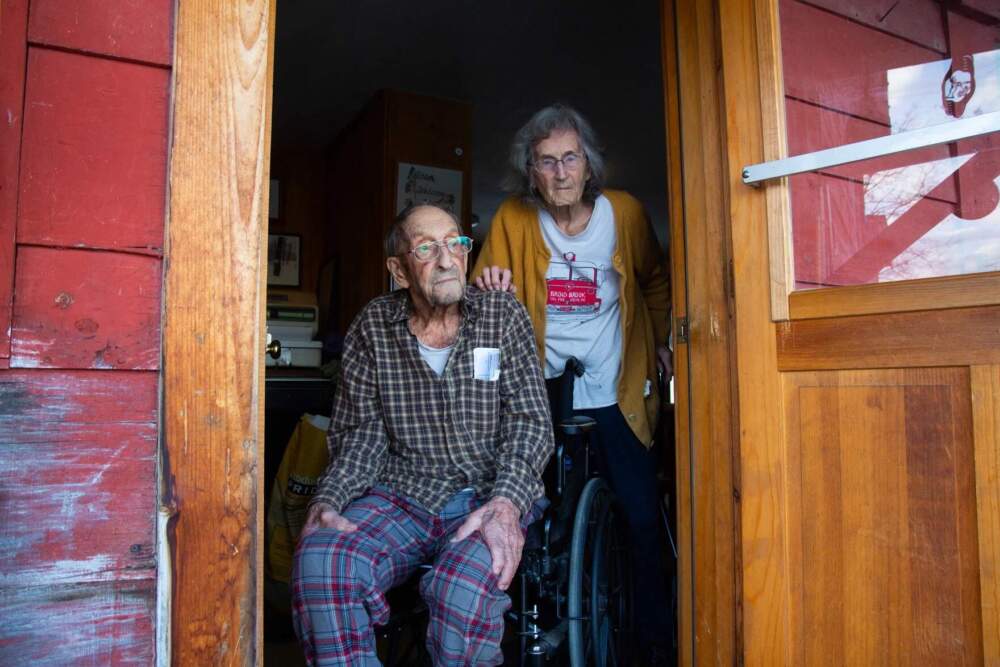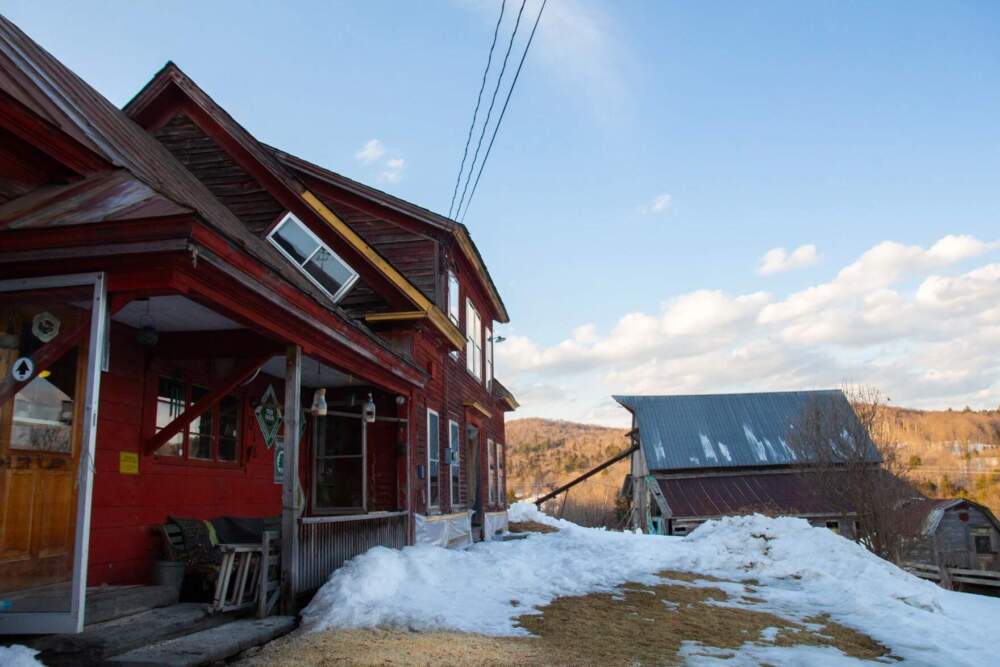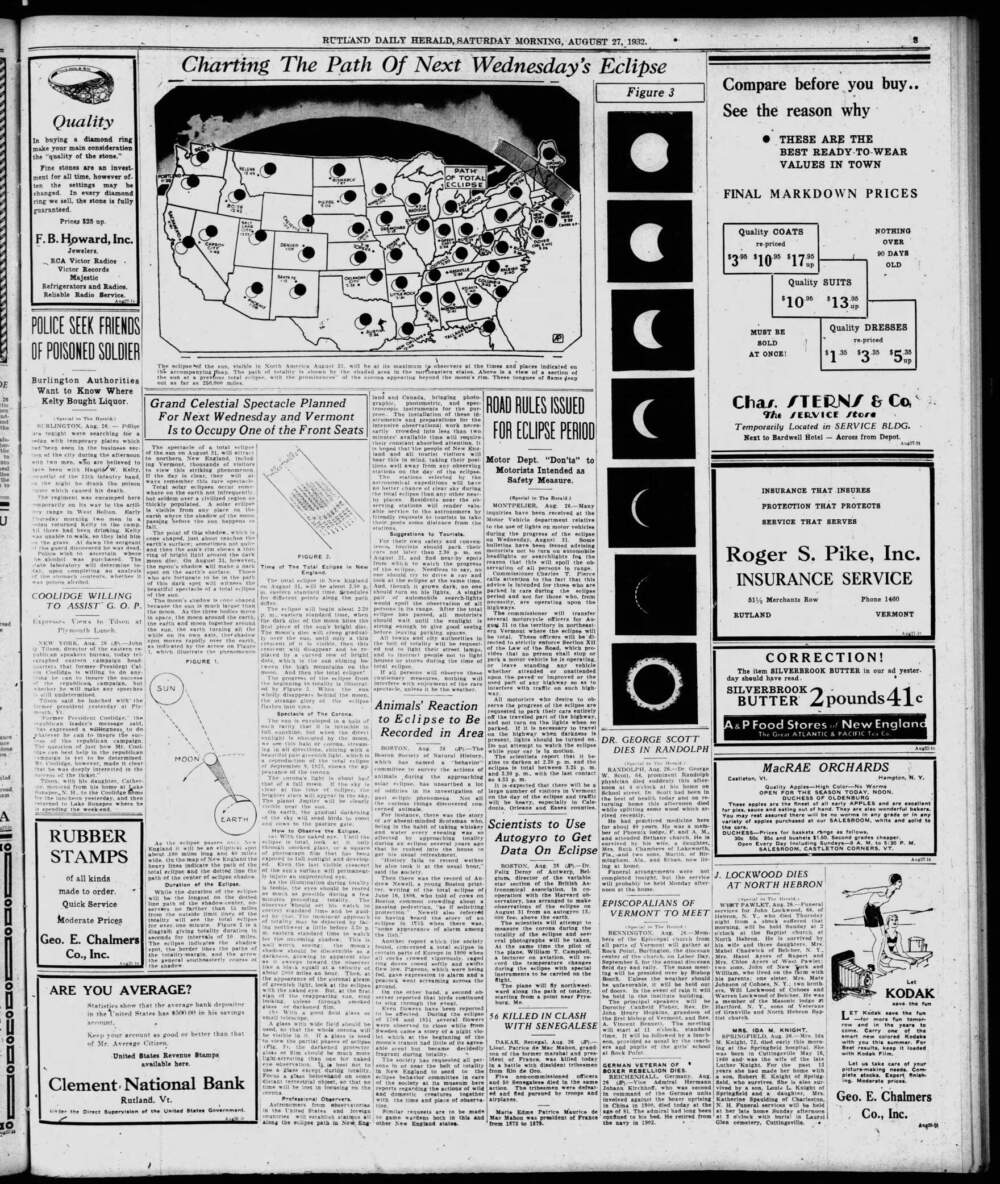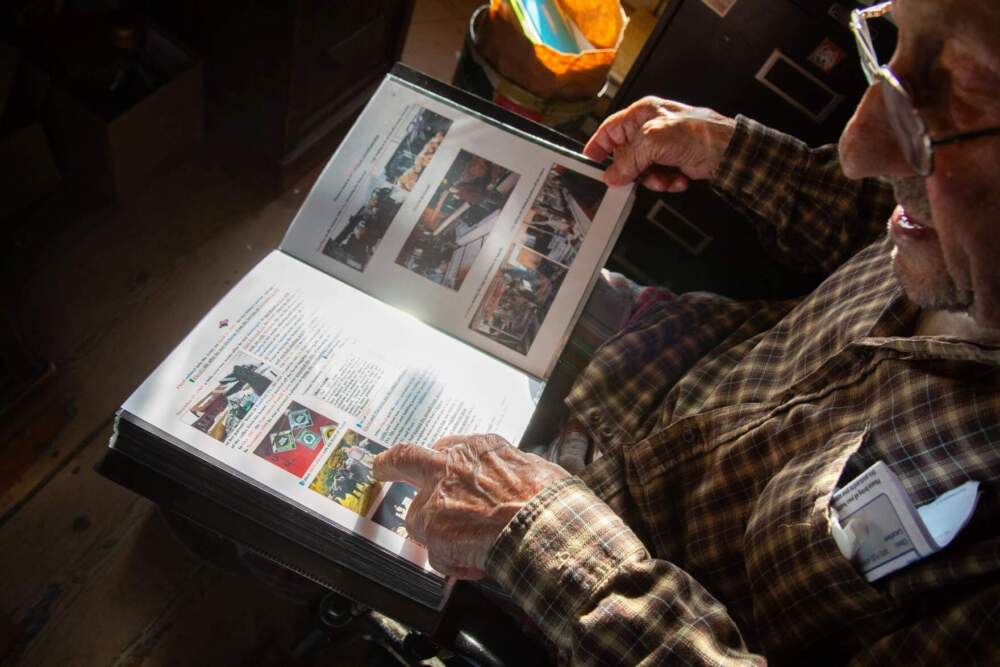Advertisement
This 104-year-old Vermonter will enjoy twice-in-a-lifetime eclipse

Anticipation is building in Vermont for the total solar eclipse on April 8 — when the moon will completely block the sun and put much of Vermont in shadow for several minutes.
While astronomers are touting it as a once-in-a-lifetime experience,104-year-old Floyd Van Alstyne of East Barnard remembers the last time the state experienced a total solar eclipse in August 1932, when he was 12.
Van Alstyne was born in Boston in 1920 and spent his early childhood in Albany. He moved to Vermont to live with an aunt in Royalton after his mother died in 1931.
Ninety-three years later, he lives just a few miles away in the same hilltop farmhouse he bought in 1945, two weeks after getting home from World War II.
“It was 250-something acres and I paid $3,600 for it,” Van Alstyne said. “No electricity, outhouse and all that.”
Van Alstyne is what you'd call a hardscrabble Vermont renaissance man who said he went to work in his early teens with logging crews and never did retire. On his farm, he did a bit of everything.
"I milked here one time, about 40 cows and had about 80 head of cattle," he said. He began driving trucks when he was 16 and hauled logs. He become proficient with a bulldozer and helped build Vermont's interstate.
“I loved that, I loved to work,” he said smiling.

Today, at 104, he uses a wheelchair to get around. He and his wife of 76 years still own about 180 acres, including a line of trees he points to out the back window.
"In 1938, you probably heard about the hurricane … right back up here, blew it down flat,” Van Alstyne said.
The Great New England Hurricane of 1938 was one of the most destructive and powerful to strike the region. Van Alstyne said as a teenager he cleared trees off part of the nearby hillside that's now part of his farm.
“I was an ox teamster skidding logs out of the woods,” he explained. “I didn't know, had no idea I was gonna buy it then,” he said of the land he was clearing.
“I'm one of the last that cleaned up the old ‘38 hurricane and just happened to be a lucky one and didn’t get hurt,” he added.
Van Alstyne also recalled Aug. 31, 1932 — the last time Vermont experienced a total solar eclipse.
"It was August, so I wouldn't have been in school," he said. "I can remember we would have a hard time finding something we could put over our eyes. And I do remember now that they had some covered glasses in the car, but that’s all we had. We didn't have this other stuff that they have now that you can use."
As if to explain, he added, "course it was more or less right in the Depression.”

He said his aunt always got the newspaper, but he doesn’t recall much news coverage or hoopla surrounding the eclipse back then.
"I don't know. We didn't think much about it y’know ... not like they do now. We thought about minding their own business I guess,” he said with a laugh.
While Van Alstyne may not remember much hoopla, Vermont newspapers in 1932 were full of articles and detailed drawings about the eclipse and where and how to watch it. Readers were informed that some trains would stop during the mid-afternoon darkness, and motorists were warned not to drive and watch the eclipse at the same time.
The Rutland Herald even provided instructions for safe viewing: “You can make good smoked glass by holding a piece of window glass in the yellow part of a candle flame and moving it around so you get a uniform blackness.”
"Hold the smokey side away from your nose and face," the instructions continued.
That would have been a helpful tip for a young Floyd Van Alstyne.
“All I can say is that it was pretty near dark," he recalled. "But it wasn’t that dark. Like early, early morning, evening, you know.”

Marjorie Van Alstyne, Floyd’s wife, was born in 1928 and doesn't remember the eclipse of 1932, but she's excited to watch the next one.
Their five kids will likely be watching as well. All of them live nearby.
Floyd said he too plans to watch the big event.
"I should probably look at it like everybody else, but I won't make a big deal of it — too much," he said.
After all, he’s already seen one in Vermont.
This story is a production of the New England News Collaborative. It was originally published by Vermont Public.